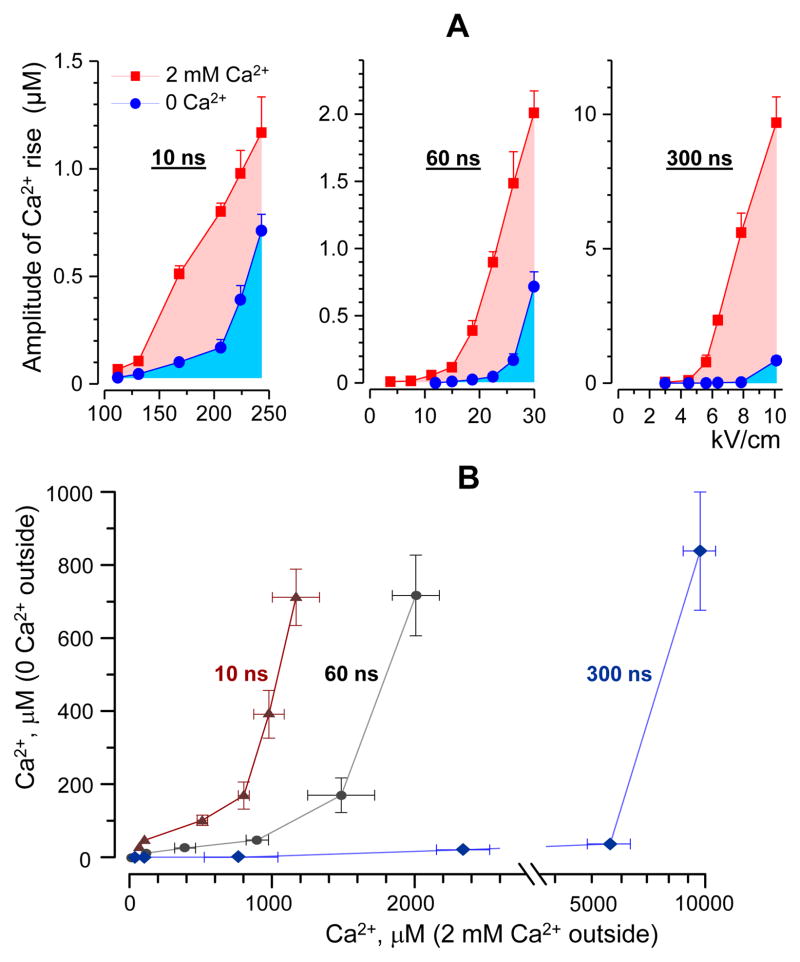Fig. 4.
Shorter nsEP are more efficient in recruiting Ca2+ from the intracellular stores. (A) The peak amplitude of Ca2+ transients evoked by 10-, 60- and 300-ns stimuli was plotted against the stimulus intensity (kV/cm), mean +/− s.e.; n ≥ 15. Cells were stimulated in the presence of 2 mM external Ca2+ (red) or its absence (blue). In the latter case, the endoplasmic reticulum was the only significant source of Ca2+. Note the increasing contribution of the intracellular Ca2+ as the stimulus duration is decreased. (B) The amplitude of Ca2+ response due to the discharge from the intracellular stores was plotted against the amplitude of the compound response (due to both the uptake from the outside and the discharge from the stores). The data shown are from the same experiments as in panel (A). For any amplitude of the compound response, shorter stimuli evoked more intracellular Ca2+ discharge.

